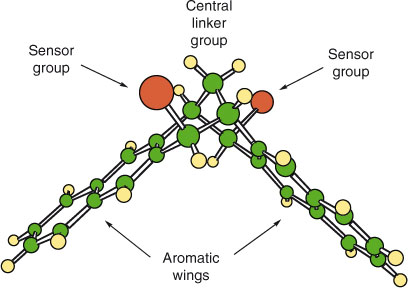Roger Bishop's Research Leadership in Crystal Engineering and Supramolecular Chemistry
Ian Dance School of Chemistry, The University of New South Wales, Sydney, NSW 2052, Australia.
Email: i.dance@unsw.edu.au

Ian Dance is Emeritus Professor of Chemistry at the University of New South Wales, and a Fellow of the Australian Academy of Science. Roger and Ian started their adventures in crystal engineering with a paper they wrote together in 1979 on helical canal inclusion complexes. |
Australian Journal of Chemistry 65(10) 1359-1360 https://doi.org/10.1071/CH12277
Published: 17 October 2012
On 21 November 2011, many colleagues, students and friends of Emeritus Professor Roger Bishop gathered in the School of Chemistry at the University of New South Wales (UNSW) to celebrate his research and mark his retirement. Roger was honoured with a symposium in crystal engineering, including presentations by Jagadese Vittal (National University of Singapore), Keiichiro Ogawa (University of Tokyo), Mark Spackman (University of Western Australia), Stuart Batten (Monash University), Chris Easton (Australian National University), Kate Jollife (University of Sydney), Chris Richardson (University of Wollongong), Alison Ung (University of Technology, Sydney), Qinghong Lin (iNova Pharmaceuticals) and Ian Dance (UNSW).
J. J. Vittal reported some recent work on solid state photoreactions, which, significantly, connected with the research of Gerhard Schmidt (Weizmann Institute) who, in systematising organic solid state photochemistry as it was known in 1971, originated the name and concept of crystal engineering [Pure Appl. Chem. 1971, 27, 647–678]. It is interesting that Roger Bishop, as a doctoral student at Cambridge University, was also publishing at this time (1969–1972) on photochemical reactions of unsaturated diketones. Roger arrived at UNSW in 1974, and was provided with ready opportunities for X-ray diffraction determination of crystal structures and examination of crystal packing, and so it is not surprising that he was soon contributing to the nascent field of crystal engineering. His early work was with symmetrical bicyclic diols, which formed high symmetry porous lattices constructed with hydrogen bonds, and are capable of being engineered to include various small molecules. Much of Roger's early research at UNSW explored this theme of host lattices based on designed hydrogen bonds, but his purview soon expanded to all types of intermolecular interactions. He was strongly involved in the early development of supramolecular chemistry, particularly the branch of supramolecular chemistry that does not depend on metal complexation.
In this Research Front, Roger Bishop provides a detailed review of host-guest systems (clathrates) and inclusion phenomena that are stabilised by intermolecular interactions weaker than conventional hydrogen bonds.[1] Here, crystal engineering is more difficult than when strong hydrogen bonds and metal ligation are the connecting elements. But, with characteristic insight and precision, Roger reveals some key characteristics of successful crystal engineering of host molecules, including C2 symmetry, V-shape, potential for aryl–aryl intermolecular interactions, and potential for halogen intermolecular bonding, including halogen–π intermolecular bonding. Roger designed and investigated 19 potential host molecules, 18 of which functioned as the expected inclusion hosts. A 95 % success rate is still rare in contemporary crystal engineering. The journal CrystEngComm profiles Roger Bishop as a prominent author in the field, and includes Fig. 1 exemplifying design features for which he is well known.

|
The Roger Bishop Crystal Engineering Symposium in 2011 embraced these themes and some further dimensions of Roger's research influences. Mark Spackmann discussed the classic lattices formed by hydroquinone and by Dianin's unsymmetrical compound, related to Roger's original diol lattices. Stuart Batten described amazing multifunctional supramolecular nanoballs, Chris Easton played molecular engineer with self-assembling cyclodextrin rotaxanes, Kate Jolliffe engineered peptides for molecular recognition, and Chris Richardson described his metal-organic frameworks. The subtleties of the organic solid state were evident in Keiichiro Ogawa's presentation on molecular torsions, while Qinghong Lin (a Bishop student) covered the commercial dimension of polymorphism in pharmaceuticals. Alison Ung (an early Bishop student), in describing some synthetic work using the Ritter reaction, reminded us that Roger is skilled in organic synthesis and research mentoring. Roger has published many papers on Ritter-type reactions, and was awarded the Ollé Prize of the Royal Australian Chemical Institute (1993) for one of these publications.
Roger Bishop is a regular participant in the International Conferences on the Chemistry of the Organic Solid State. He organised the sixteenth such meeting, in Sydney in July 2003, and also edited the proceedings which were published in Molecular Crystals and Liquid Crystals.
The four articles in this Research Front on supramolecular chemistry and crystal engineering supplement the presentations at the symposium. Roger reviews his design principles for weak interactions.[1] Len Lindoy et al.[2] describe the templated synthesis of one of their tripodal tris(bipyridyl) ligands around Fe, with the resulting helical complex undergoing protonation equilibria and anion binding. Naresh Kumar et al.[3] highlight the synthesis theme, describing the synthesis of kudzuisoflavone A and related compounds. Pall Thordarson et al.[4] describe two crown-pyromellitimide molecules and the weak carbonyl–carbonyl interactions occurring in the crystal structure of one of them.
References
[1] R. Bishop, Aust. J. Chem. 2012, 65, 1361.| Crossref | GoogleScholarGoogle Scholar |
[2] C. R. K. Glasson, G. V. Meehan, C. A. Motti, J. K. Clegg, M. S. Davies, L. F. Lindoy, Aust. J. Chem. 2012, 65, 1371.
| Crossref | GoogleScholarGoogle Scholar |
[3] M. Deodhar, K. Wood, D. StC. Black, N. Kumar, Aust. J. Chem. 2012, 65, 1377.
| Crossref | GoogleScholarGoogle Scholar |
[4] E. N. W. Howe, M. Bhadbhade, P. Thordarson, Aust. J. Chem. 2012, 65, 1384.
| Crossref | GoogleScholarGoogle Scholar |


